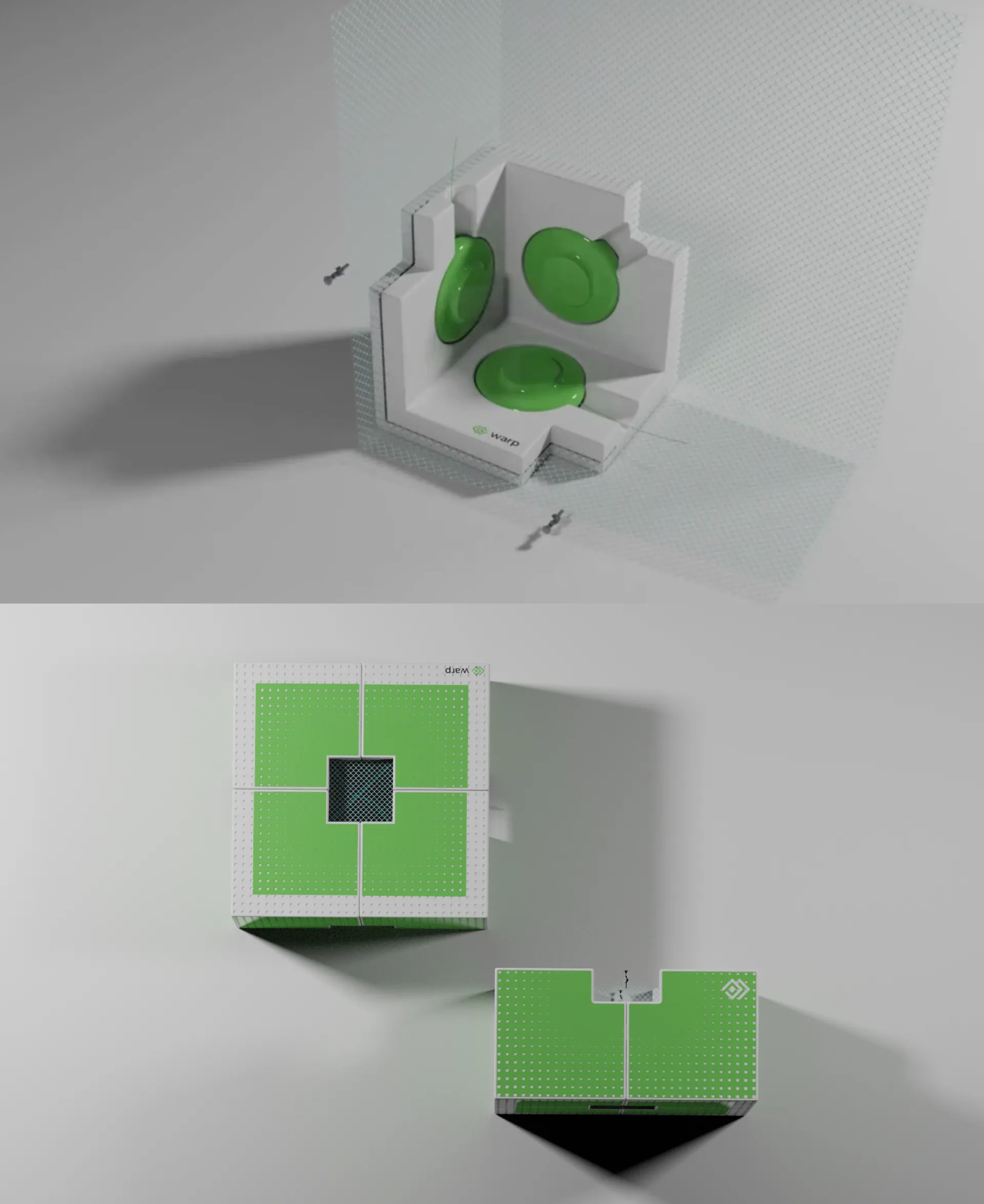To reduce plastic waste from Palette Packaging
There is a lot of plastic waste that is generated from product packaging, especially in B2B services. We are looking to provide a product or a service to help reduce personal waste and consumption for consumers who want to build a more sustainable future. During my master's, we had a class called Applied Theory in Design by Ms. Hermans, head of the Product Design Department here at SCAD. During her class, we had the opportunity to learn about creating frameworks from research and various research techniques. I worked as a business analyst during the project to help understand what drives the growth of this product, and I worked on the design of the product with the product designers from our team. I had the opportunity to work with our supervisor, Kwela Hermans, who guided us by giving valuable feedback. Over the course of 3 months, we had various ethnographic reviews from our supervisor, who also gave us critiques on the entire project.
With the ubiquity of ordering from e-commerce and large corporate sites like Amazon, Walmart and Target. The number of packages and amount of waste produced continues to be uncertain for sustainability efforts. While cardboard boxes are commonly recycled, often times items are shipped in thin plastic mailers and only a small percent actually get recycled. With that in mind, we are narrowing down our focus to just smaller chain grocery stores while aiming to reduce pre-packaged waste within items before they reach the consumers hand.
How Might We tackle pre-packaged offerings within stores before reaching consumers to help eliminate or reduce their personal waste?
Defining Problem Statement
Secondary Research
Observational Ethnography
Discussion Guide
Interview
Data Affinitization
Curating Research Framework
Communicating Research Findings
Finalizing the Framework
Ideation
Prototyping Features
Rendering Potential Concepts
Usability Testing
How We Got Here?
In the following sections, we will delve into our comprehensive research and analysis aimed at fostering sustainability in grocery shopping. We will cover:
- Research Methods: Utilizing Vijay Kumar's "101 Design Methods" to guide our ideation and prototyping.
- Certifications: Exploring various sustainability certifications, including 1% for the Planet, Climate Neutral Certified, and B Corp Certified.
- Experience Mapping: Analyzing customer behavior in grocery stores across five stages—Attraction, Entry, Engagement, Exit, and Extension—with a focus on sustainability.
- SWOT Analysis and Time vs. Impact Matrix: Evaluating our strategies and their potential impacts.
- Key Insights: Highlighting the significance of sustainable and niche grocery items, customer preferences, and the seasonal impact on product significance.
After completing our secondary and primary research, we focused on developing a strong brand identity for Warp™. Our goal was to create a visually compelling and meaningful representation of our mission to reduce plastic waste.
The brand name Warp™ stands for "We Amazingly Reduced Plastics," capturing our commitment to sustainability. The visual design features a clean and modern logo, with a tagline emphasizing our goal: "Reduce plastics to save our future."
We selected Montserrat Bold as our primary typeface for its strong impact and Montserrat Regular for readability in body text. Our color scheme includes green to symbolize sustainability and eco-friendliness, and orange for energy and visibility, complemented by white and black for contrast and clarity.
This cohesive branding strategy effectively communicates our dedication to reducing plastic waste and engaging eco-conscious consumers, positioning Warp™ as a leader in sustainability.
Ideation and Prototyping
In this phase, we explored innovative design concepts and developed prototypes to bring our sustainable solutions to life. Our goal was to create practical and effective products that align with our mission. The images below illustrate various stages of this creative process, showcasing our efforts to:
- Conceptualize Designs: Generate ideas that address the challenge of reducing plastic waste in grocery stores.
- Develop Prototypes: Build physical and digital models to test and refine our concepts.
- Iterate and Improve: Continuously improve our designs based on feedback and testing to ensure they meet our sustainability goals.
The importance of addressing environmental issues:
By developing a product that helps reduce plastic waste, you may have learned about the importance of addressing environmental issues and the positive impact that businesses can have on the world around them.
The value of customer feedback
You may have learned the value of seeking out and listening to customer feedback, as it can help you improve your product and better meet the needs of your target market.
The importance of market research
You may have learned about the importance of conducting market research to understand the needs and preferences of your target market, as well as the competitive landscape.














